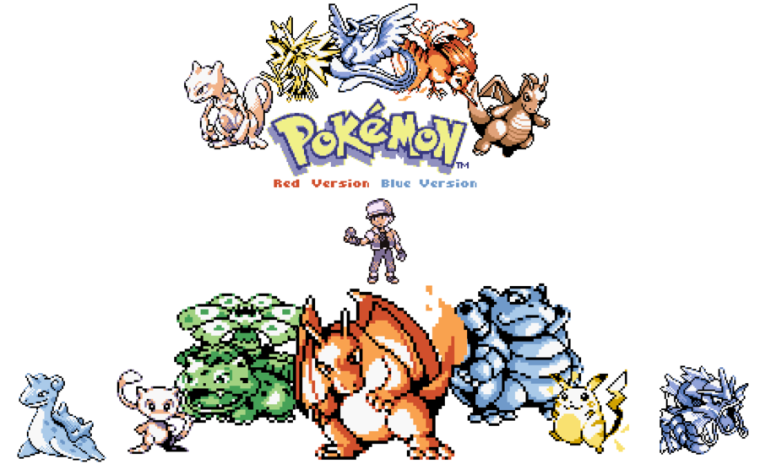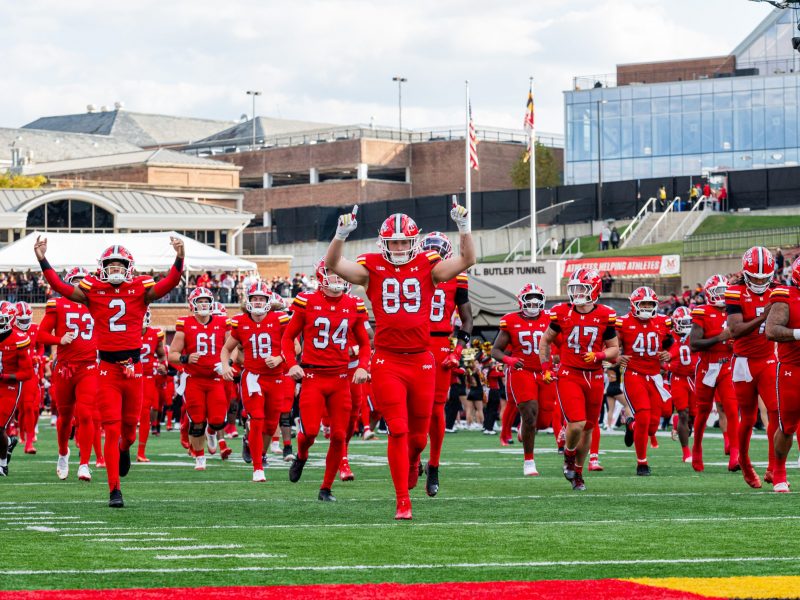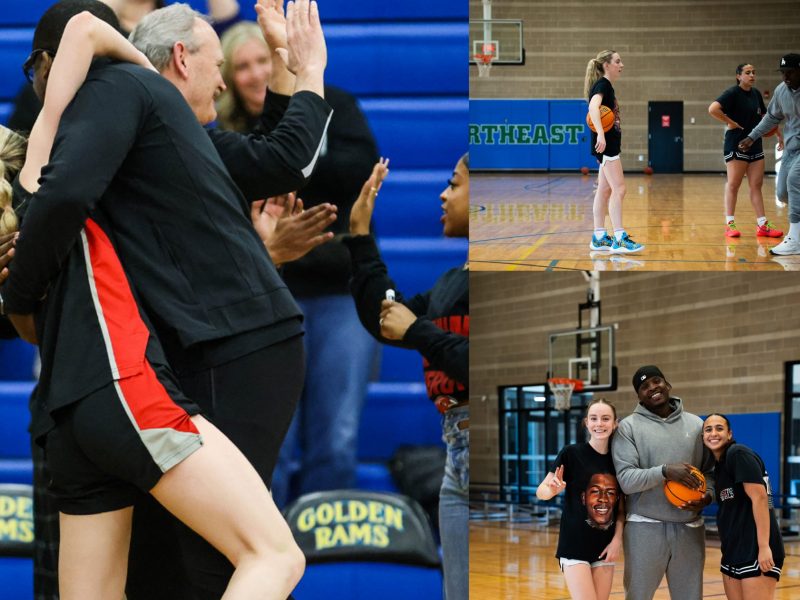
“So many memories of my childhood are centered around playing this series of games, collecting an army of creatively designed creatures and sending them into battle with my brothers and friends — and Pokémon Red started it all.” — Jonathan Raeder
Red Version
The debate over the greatest Game Boy game shouldn’t exist. There’s an obvious choice — Pokémon Red Version.
I remember it clearly: I was six years old at Christmas, and I had just received that glorious, glossy red box, emblazoned with the epic image of a red dragon. I hurriedly ripped open the packaging and started my file. I was greeted by the famous Professor Oak and ultimately asked to choose which of the three starter Pokémon I wanted to take on my grand journey. Already one for taking the path less traveled, I chose a Squirtle (the opposite of the box art Pokémon) and gave it what I considered an incredibly great nickname, Wavey. Many hours of battling, wandering, catching, trading and real childlike wonder awaited me.
The staggeringly popular franchise Pokémon — first in video games and then in television shows, comic books, trading card games, toys, theme parks, giant balloons, clothing and essentially everything that can have a picture of or be shaped like a Pikachu — has survived the many years since I first played that Red Version. So many memories of my childhood are centered around playing this series of games, collecting an army of creatively designed creatures and sending them into battle with my brothers and friends — and Pokémon Red started it all.
It’s hard to see the early versions of these creatures on a blocky black and white screen or hear their individual midi-cries and the now-famous songs from the game without feeling a wash of nostalgia. Tense attempts to catch rare Pokémon only to see them bursting from their Pokéballs, wandering through dark caves and being pelted with an endless horde of Zubats, waking up an enormously fat Snorlax by playing a flute, the strangely terrifying music in Lavender Town, the relentlessly evil Team Rocket (who would let you pass as long as you defeated their weak Pokémon, despite the fact that you’re only a 10-year-old kid) and many other elements have become memes and memories for millions of gamers. Some of us even figured out the mysterious MissingNo. glitch, in which completing a complex sequence of actions spawned a glitch Pokémon that looked like a Tetris piece, and defeating it allowed us to multiply any item, including the normally one-of-a-kind Master Ball.
The trading and battling aspects of the game fostered community and competition. I remember battling and trading with friends and even kids at school I didn’t consider my friends. We all played Pokémon. We all loved Pokémon. Our teams were all different, with different move sets and nicknames, and the attempts to become the best and catch ‘em all were real and intense. The most recent Pokémon games have inflated the number of catchable Pokémon to more than 700, but back in the Red and Blue era, there were only 150, and catching them all seemed like a feasible task.
Pokémon Red, despite its many sequels and a remake in 2004, remains popular to this day. The hilarious and just plain bizarre social experiment Twitch Plays Pokémon, in which tens of thousands of people typed button input commands to an Internet program that listened to each one and attempted to play Red with them all, spawned memes and a complex overarching story out of chat room chaos, proving that somehow, anarchy worked. Twitch beat the game. It still astounds me.
Some people claim Nintendo’s habit of releasing each new Pokémon generation with two or three versions, containing only minor differences but each one necessary for catching all the Pokémon, is a cheap ploy to grab money from gamers. There’s only one save file in each game, so if you want to replay the game without losing your no-doubt impressive menagerie of Pokémon, you have to buy another version. Those people don’t understand the importance of Red Version. Only in Red Version could you catch the purple poisonous snakes Ekans and Arbok; only in Red Version could you catch the fiery dogs Growlithe and Arcanine; and most importantly, only in Red Version could you catch the Pokémon 6-year olds found the coolest, Scyther, the giant bug with swords for hands.
It’s been a very long time since I’ve booted up Pokémon Red, but the memory and impact of that game have been with me for almost as long as I can remember. I don’t play games that often anymore, but they were an essential part of my childhood, and none had a greater impact than Pokémon Red.
Keep your Blue Version, heretics. Pokémon Red will always be the greatest Game Boy game of all time.
Blue Version
The debate over the greatest Game Boy game shouldn’t exist at all. There’s an obvious choice — Pokémon Blue Version.
I remember it clearly: I was seven years old at my birthday, and I had just received that glorious, glossy blue box, emblazoned with the epic image of a giant turtle. I hurriedly ripped open the packaging and started up my file. I was greeted by the famous Professor Oak and ultimately asked to choose which of the three starter Pokémon I wanted to take on my grand journey. Already one for taking the path less traveled, I chose a Charmander (the opposite of the box art Pokémon) and gave it what I considered to be an incredibly great nickname, Charly. Many hours of battling, wandering, catching, trading and real childlike wonder awaited me.
The staggeringly popular franchise Pokémon — first in video games and then television shows, comic books, trading card games, toys, theme parks, giant balloons, clothing and essentially everything that can have a picture of or be shaped like a Pikachu — has survived the many years since I first played that Blue Version. So many memories of my childhood are centered around playing this series of games, collecting an army of creatively designed creatures and sending them into battle with my brothers and friends — and Pokémon Blue started it all.
It’s hard to see the early versions of these creatures on a blocky black and white screen, or hear their individual midi-cries and the now-famous songs from the game without feeling a wash of nostalgia. Tense attempts to catch rare Pokémon only to see them bursting from their Pokéballs, wandering through dark caves and being pelted with an endless horde of Zubats, waking up an enormously fat Snorlax by playing a flute, the strangely terrifying music in Lavender Town, the relentlessly evil Team Rocket (who would let you pass as long as you defeated their weak Pokémon, despite the fact that you’re only a 10-year-old kid) and many other elements have become memes and memories for millions of gamers. Some of us even figured out the mysterious MissingNo. glitch, in which completing a complex sequence of actions spawned a glitch Pokémon that looked like a Tetris piece, and defeating it allowed us to multiply any item, including the normally one-of-a-kind Master Ball.
The trading and battling of the game fostered community and competition. I remember battling and trading with friends and even kids at school I didn’t consider my friends. We all played Pokémon. We all loved Pokémon. Our teams were all different, with different move sets and nicknames, and the attempts to become the best and catch ’em all were real and intense. The most recent Pokémon games have inflated the number of catchable Pokémon to more than 700, but back in the Blue and Red era there were only 150, and catching them all seemed like a feasible task.
Pokémon Blue, despite its many sequels and a remake in 2004, remains popular to this day. The hilarious and just plain bizarre social experiment Twitch Plays Pokémon, in which thousands of people shouted button input commands to an Internet program that listened to each one and attempted to play Blue with them all, spawned memes and an overarching story out of chaos, proving that somehow, anarchy worked. They beat the game. It still astounds me.
Some people claim Nintendo’s habit of releasing each new Pokémon generation with two or three versions, containing minor differences but each one necessary for catching all the Pokémon, is a cheap ploy to grab money from gamers. Throw in only one save file in each game, and if you want to replay the game without losing your no-doubt impressive menagerie of Pokémon, you have to buy another version. I say those people don’t understand the importance of Blue Version. Only in Blue Version could you catch the armored mice Sandshrew and Sandslash; only in Blue Version could you catch the fiery foxes Vulpix and Ninetales; and most importantly, only in Blue Version could you catch the Pokémon 6-year olds found the coolest — Pinsir, the giant bug with pincers on its head.
It’s been a very long time since I’ve booted up Pokémon Blue, but the memory and impact of that game has been with me for almost as long as I can remember. I don’t play games that often anymore, but they were an essential part of my childhood, and none had a greater impact than Pokémon Blue.
Keep your Red Version, heretics. Pokémon Blue will always be the greatest Game Boy game of all time.



